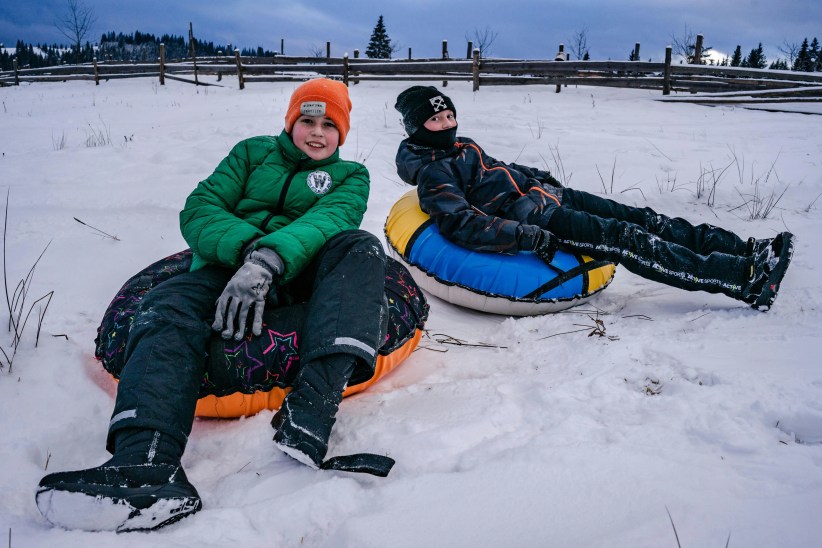Talk about a long-distance call.
On Tuesday, August 7, a group of Richmond Hill children spoke live with astronaut Clay Anderson aboard the International Space Station (ISS), 200 miles above Hawaii. The group used a ham radio to pose 23 questions to Anderson, who is part of a construction team building additions to the ISS.
The conversation was carried out in collaboration with Amateur Radio on the International Space Station (ARISS), a volunteer organization that develops and operates the radio station aboard the ISS,
The children were campers at the One Stop Richmond Hill Community Center Summer Camp, an organization run by members of the Richmond Hill Block Association (RHBA). Neme Alperstein, RHBA’s Computer, Technology and Video Conferencing Administrator, fostered the communication between her organization and NASA through a long-term relationship that began when she attended space camp as a child.
“I loved space camp so much that later, when I became an educator, I went to NASA’s annual conferences, and ultimately got involved with video conferencing,” she said. “It’s at the point now where NASA actually called me. They called the weekend before the conference and said, ‘We’ve got a slot open - would you like to speak?’ Are they kidding?”
NASA, it turned out, was not kidding, and two days later, fourth- and fifth-graders at RHBA were speaking live with an astronaut floating through space.
The questions asked were not exactly predictable; camper Breanna Evelyn asked Anderson how often he could email his family from space, and Anton Seminerio wanted to know if chocolate tasted different in space.
“He said chocolate tasted just fine,” said Seminerio, 8, who attends school at P.S. 56.
“When we started, I didn’t think there was gonna be an answer, because I thought there would be bad transmission,” said 10-year-old Kadeen Lopez, who asked Anderson to name his favorite video game. “I was amazed and surprised at the signal.”
Janelle Munoz, 10, said it was educational to “hear astronauts speak from another planet.”
“It would be really cool to be in space,” added Munoz, who has aspirations to continue studying space technology.
Engendering such interest among kids, explained Alperstein, is exactly NASA’s purpose.
“Instead of just watching videos or reading, the new initiative is to get kids to actually interact,” she said. “The kids are the future, so they have to get the word out now.”
Simcha Waisman, President of One Stop Richmond Hill, said his organization wants to go beyond radio conferencing. Recently, Waisman worked to raise money to purchase a video conferencing system for RHBA that will allow students to visually interact through an international network. In addition to video conferencing with anyone worldwide, the system will allow students to talk with astronauts.
“Space is our future,” said Waisman. “So many things have come out of [the study of] space, and so many things will continue to come out of it.”
Michael Simanowitz, Chief of Staff to Assemblymember Nettie Mayersohn, who helped fund RHBA’s video conferencing system, said Mayersohn’s interest in the idea came out of a lifelong commitment to children.
“Before becoming a political leader, she was involved in education, a member of Parent-Teacher Associations, et cetera,” said Simanowitz. “Video conferencing is our future. You see it in movies all the time, but here’s a group of kids in Queens, New York who can do it…but we want opportunities like this to become norms rather than exceptions. Any tool that makes kids think three-dimensionally is worth the money.”
Echoing Simanowitz’ statement, Alperstein said, “We have an obligation to bring this sort of thing to kids. We can’t just tell them information - they have to experience it. If a student knows someone from an organization like NASA is going to see their work and answer their questions, guess what - you’re going to see a lot more preparation go into the work.”






























